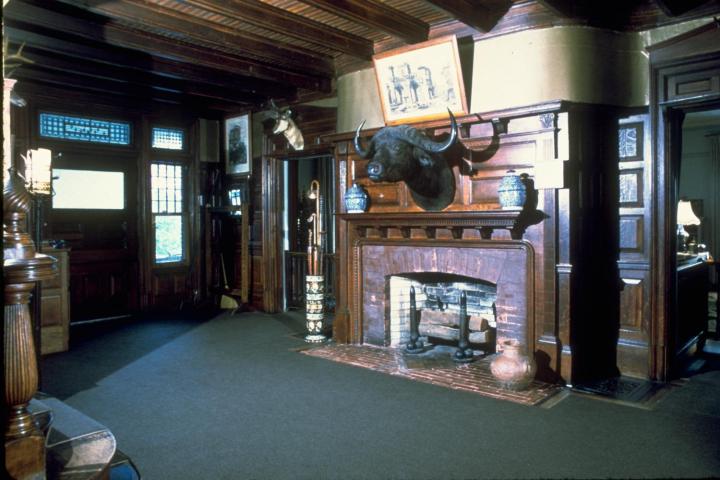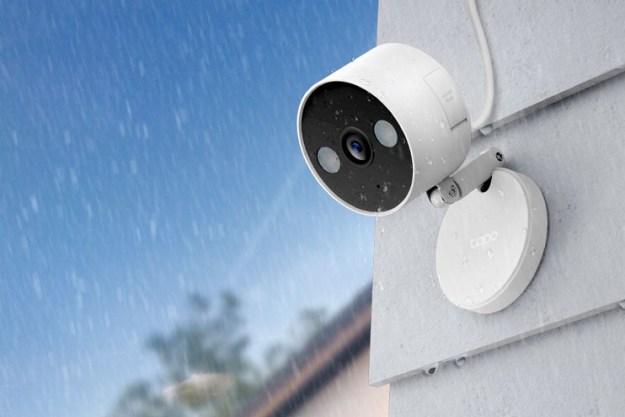
Mount Vernon
With 21 rooms and 11,028 square feet of living space, Mount Vernon reflects George Washington’s wealth. It began as a one-and-half-story farmhouse, built by the future president’s father in 1735. Over the years, George Washington added on to the house, starting with a roof-raising in 1758. At the same time, he rusticated the exterior pine boards to make them look like stone, retaining his father’s construction materials while giving the mansion a tonier look. In addition to the mansion, the grounds house restored outbuildings where slaves worked, including a smokehouse and stables. At the time of Washington’s death, the Virginia plantation was also running America’s largest whiskey distillery. Though its two-story porch is one of the house’s most iconic features, the cellar was a focal point of the movie National Treasure: Book of Secrets. Sadly, there’s no tunnel attached to it, according to the Mount Vernon Ladies’ Association.
President: George Washington
Built: 1735 to 1774
Price then: Sold for $200,000 in 1853
Price now: $4,949,000
Monticello
In Charlottesville, Virginia, you’ll find Monticello, Thomas Jefferson’s 23-room home. Its 11,000 square feet underwent renovations throughout the third president’s life; he designed much of the house himself, despite having only studied architecture in books. With its dome and columned portico, the Neoclassical home stood out from its contemporaries. Jefferson was influenced by his time in France and by Renaissance architect Andrea Palladio. Some of the more interesting innovations around the house include dumbwaiters, beds that disappear into walls, folding doors, and a clock that runs on weights and pulleys. Over 200 people lived on the plantation, including slaves, many of whom lived and worked on Mulberry Row.
President: Thomas Jefferson
Built: 1768 to 1808
Price then: Insured for $6,300 in 1800
Price now: $5,950,000
Montpelier
Also located in Virginia, Montpelier was James Madison’s home, where he lived with his wife and mother for much of his life. It has 22 rooms but its 12,261 square feet were divided into a duplex. The president and Dolley Madison lived in the new addition, while his mother stayed in the portion of the house built by her husband. A portico joins the two separate homes, which have been restored to what they would’ve looked like during the former president’s time. Though Dolley sold the home and many belongings after her husband’s death, some items have since been recovered.
President: James Madison
Built: 1760
Price then: Insured for $15,000 in 1813
Price now: $5,000,000
Sagamore Hill
The first presidential “summer White House,” Sagamore Hill is Theodore Roosevelt’s beloved home. Located in Oyster Bay, New York, it’s the largest house on the list at 14,174 square feet. New York architects Lamb and Rich designed the house with the president’s input, as well as help from his first wife. The sprawling home’s verandas and porte-cochère dominate the outside, while the inside houses Roosevelt’s hunting trophies, including an elephant-foot wastebasket and the rhinoceros-foot inkwell. Much of them are on display, thanks to a recent $10-million renovation, according to the Wall Street Journal.
President: Theodore Roosevelt
Built: 1884 to 1904
Price then: $16,975 in 1884
Price now: $3,195,000
Truman House
Travel to Independence, Missouri to get a bargain on a presidential house. A good-sized dwelling, with 14 rooms and 8,800 square feet, it was home to Harry S. Truman for 50 years, though it actually belonged to the family of his wife, Bess. In 1867, her grandfather began updating the home, transforming it to the town’s swankiest residence by 1885. It had indoor plumbing, gas lighting, and impressive porches. Once Truman became president, it was in need of work before the eyes of the nation caught sight of the new summer White House. It took six weeks for a team of workers to get the property into shape, and the town’s mayor added a flagpole for the occasion, too.
President: Harry S. Truman
Built: 1867 to 1885
Price then: $25,000 in 1953
Price now: $269,000
Eisenhower Home
Dwight D. Eisenhower’s Gettysburg, Pennsylvania home is the smallest on the list at 4,100 square feet, but it does boast 24 rooms. Sitting on 189 acres, it was the sight of Eisenhower Farms, which Ike started during his presidency. He liked to show visiting dignitaries his cattle. Shortly after his election, architects began renovating the home and discovered a dilapidated, 200-year-old log cabin behind the walls, and Mamie Eisenhower asked them to salvage what they could. Now a modified Georgian farmhouse, it has eight bedrooms, nine bathrooms, and a glassed-in porch with a mountain view. They also installed a skeet-shooting range, teahouse, and putting green on the grounds.
President: Dwight D. Eisenhower
Purchased: 1950
Price then: $40,000
Price now: $618,000








